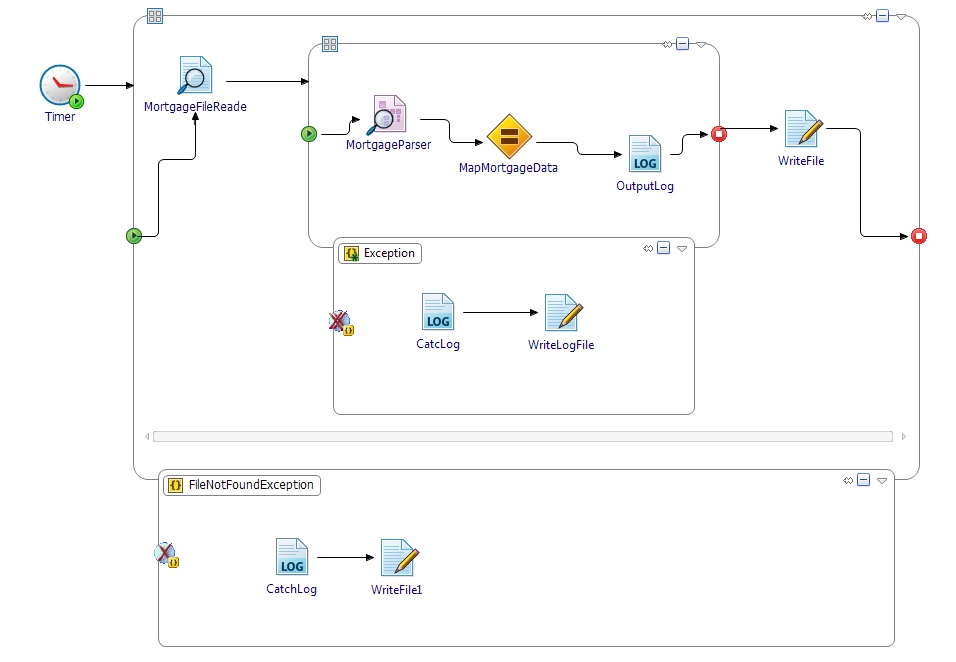Fault Handlers
Errors (or faults) can occur when executing a process. Fault handlers allow you to catch faults or exceptions and create fault-handling procedures to deal with potential runtime errors in your process definitions.
Fault handlers are the recommended way to catch faults or exceptions in a process. Two types of fault handlers are available: Catch Specific Fault and Catch All Faults.
Fault handlers when defined at the scope level, allows you to catch faults or exceptions thrown by activities within a scope. To catch faults or exceptions specific to an individual activity, you need to define a new scope for that individual activity and attach a fault handler to the new scope.
At runtime, once a fault handler is executed, the associated scope is not completed due to the error thrown. If a fault is not thrown in the fault handler, the process execution continues with the first activity that follows the scope. If a fault is thrown in the fault handler, then the engine looks for an enclosing scope that is designed to handle the fault. If one is found, the engine executes it. Once the enclosing fault handler finishes its execution, the engine executes the next activity following the scope. If no fault handlers are found in the enclosing scopes, then the job terminates with a fault.
Consider the fault handlers defined in the sample process.
If an exception is caught in the inner scope, the exception is logged to a file and the scope is completed. The process execution then continues to the Write File activity, which is the next activity in the process. If an exception is caught in the outer scope, the exception is logged and the scope is completed. The process execution completes successfully as there are no following activities to be processed. An Exit activity inside the fault handler returns the control out of the scope and the process.

